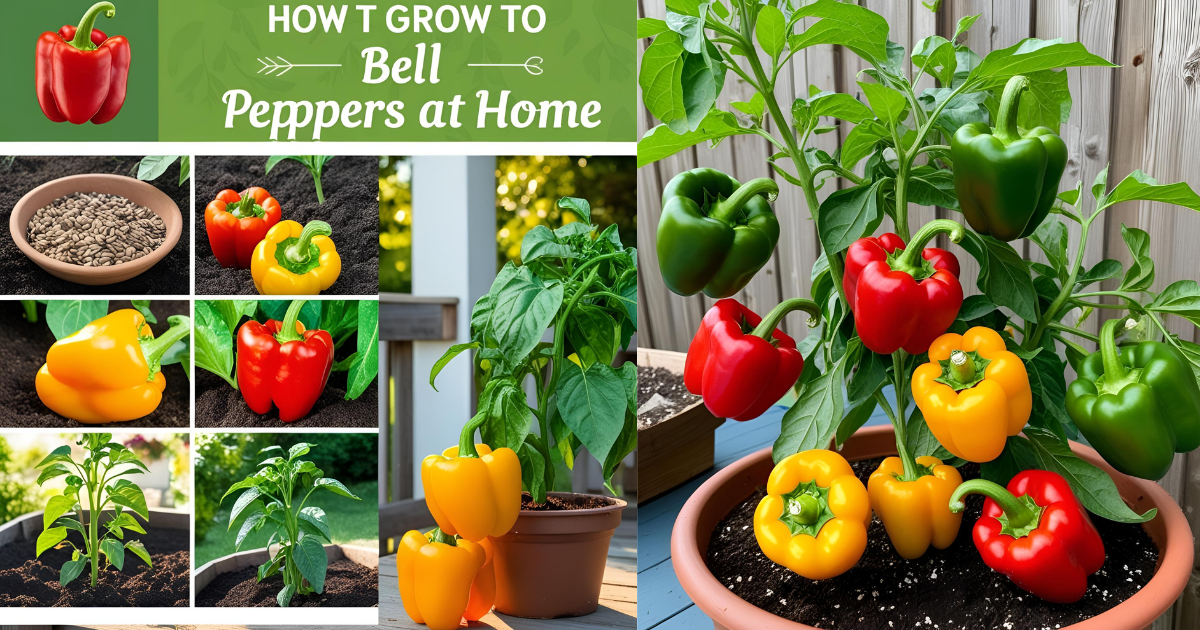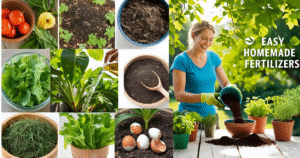Introduction
This easy, step-by-step guide teaches how to grow bell peppers at home. Discover the best tips for thriving pepper plants indoors or in your garden from seed to harvest.
It all started with a forgotten bell pepper on my kitchen counter. I sliced it open as it wrinkled and found a cluster of perfect little seeds. Instead of tossing them away, I planted a few in a small pot by my window. To my surprise, weeks later, tiny green shoots emerged. That moment sparked a beautiful journey of learning how to grow bell peppers at home. You’ll love growing your own if you’ve ever marveled at fresh peppers in your salad or stir-fry. Not only is it simple, but it’s also a fulfilling way to enjoy fresh, organic produce right from your backyard—or balcony!
—
Choose the Right Bell Pepper Variety for Home Growing
Before planting, select a bell pepper variety that suits your space and climate. Popular choices include:
California Wonder – Classic green-to-red variety, great for beginners.
Sweet Banana Peppers – Perfect for pickling or eating raw.
Mini Bell Peppers – Ideal for containers or small spaces.
Purple or Chocolate Bells – Unique colors that impress.
Choose “compact” or “container-friendly” seeds if space is limited.
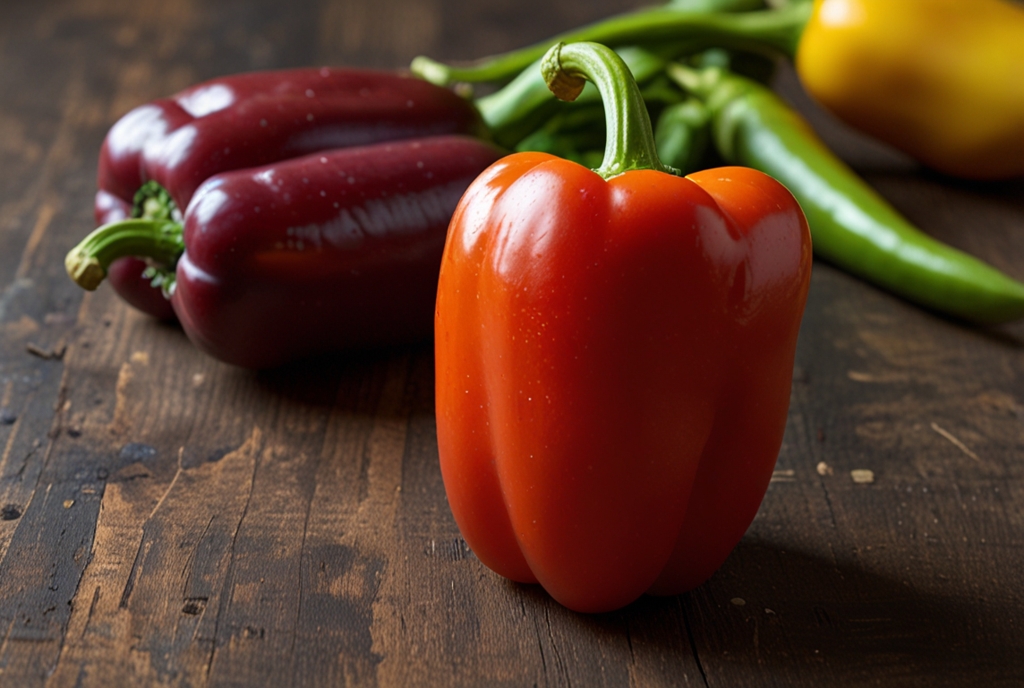
—
Start Seeds Indoors for a Head Start
Bell peppers need a long growing season, so starting seeds indoors 8–10 weeks before your last frost is key.
Here’s how to start seeds indoors:
1. Use a seed-starting mix in trays or small pots.
2. Plant seeds ¼ inch deep and water gently.
3. Place trays in a warm spot (70–80°F) for germination.
4 .Use grow lights or a sunny windowsill for 12–16 hours daily.
5. Keep soil moist but not soggy.
6. Transplant seedlings once they have 2–3 true leaves.
—
Prepare the Perfect Spot for Planting Outdoors
Once all danger of frost has passed, transplant your seedlings outside. Bell peppers love warmth and sun!
Best outdoor growing conditions include:
. 6–8 hours of full sun daily
. Well-draining, fertile soil enriched with compost
. Raised beds or large containers if space is tight
. Spacing: 18–24 inches between plants
. Harden off seedlings by gradually exposing them to outdoor conditions over 5–7 days.
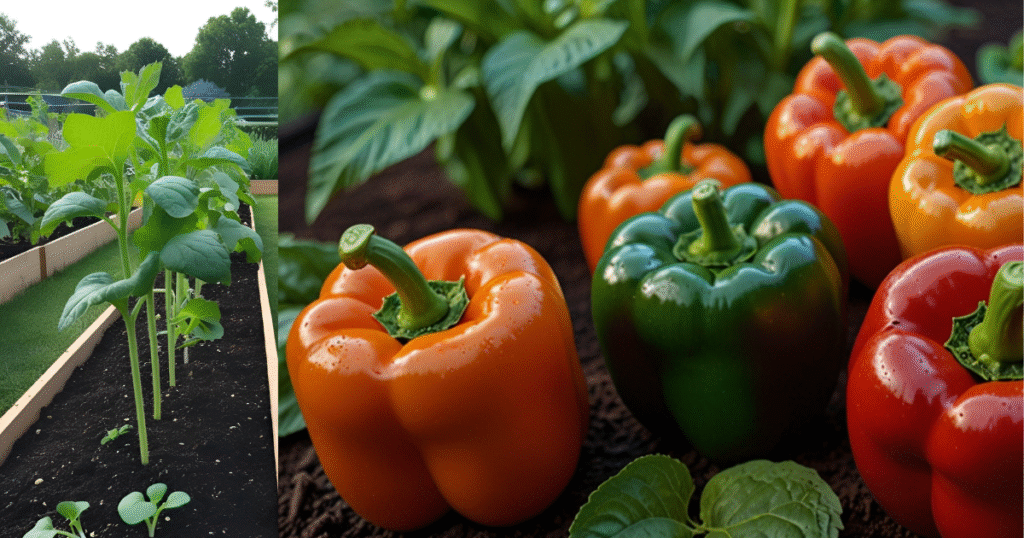
—
Use the Right Soil and Fertilizer for Growth
Bell peppers are nutrient-hungry plants, so soil quality matters.
Tips for ideal soil prep:
1. Mix in compost or aged manure for organic richness.
2. Maintain a slightly acidic to neutral pH (6.2–7.0).
3. Apply a balanced fertilizer (10-10-10) at planting.
4. Use liquid feed every 2–3 weeks during the growing season.
5. Avoid over-fertilizing with nitrogen—it causes lush leaves but fewer fruits.
—
Master the Art of Watering Bell Peppers
Consistent watering is crucial for healthy pepper plants.
Watering best practices:
Water deeply once or twice a week.
Keep soil evenly moist, not waterlogged.
Use mulch around plants to retain moisture and reduce weeds.
Water at the base of the plant to avoid fungal diseases.
During hot spells, check daily to prevent dry soil.
—
Stake or Cage Your Plants for Support
Bell pepper plants can become top-heavy with fruit, so give them support.
Simple support options:
Tomato cages work perfectly for bell peppers.
Use bamboo stakes and garden ties for a minimalist look.
Tie stems loosely to supports to prevent breakage.
Supporting plants early prevents bending and bruising of your harvest.
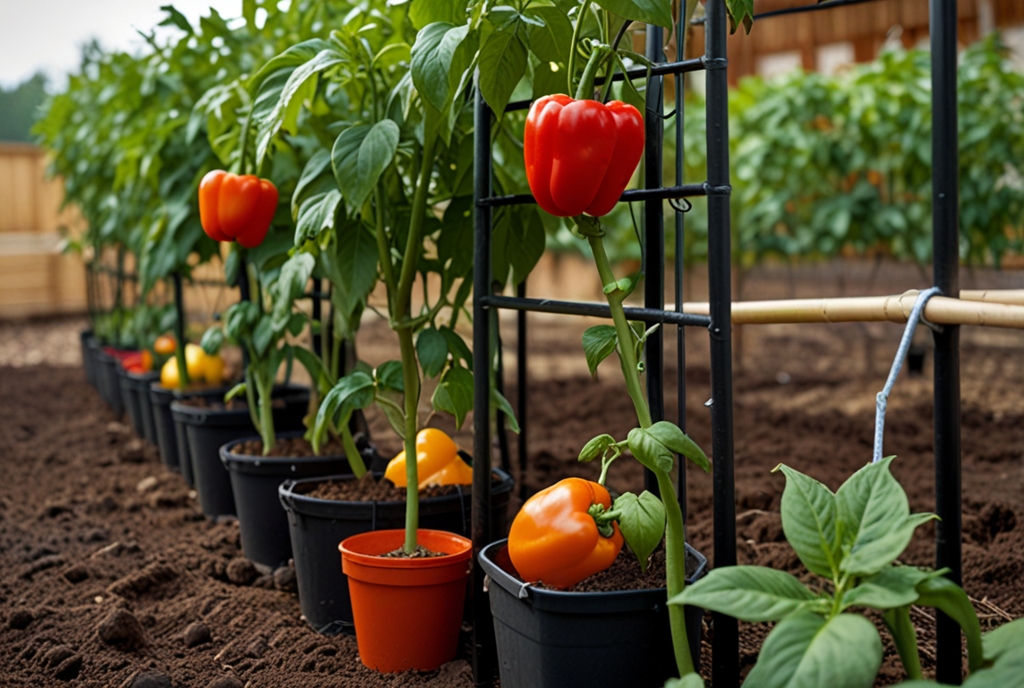
—
Keep an Eye Out for Pests and Diseases
Bell peppers are relatively hardy but can face pest and disease issues.
Common pests to watch for:
Aphids
Cutworms
Spider mites
Pepper maggots
Disease threats include:
. Blossom end rot (due to calcium deficiency)
. Bacterial leaf spot
. Powdery mildew
. Prevent problems by:
. Using neem oil or insecticidal soap
. Removing infected leaves immediately
. Practicing crop rotation and proper spacing
. Healthy soil and regular checks are your best defence.
—
Encourage Pollination for More Peppers
Even though bell peppers are self-pollinating, you can boost yield with extra help.
Pollination tips:
. Attract bees with nearby flowering herbs like basil or lavender.
. Gently shake the plant or use a soft brush to transfer pollen.
. Grow more than one plant to improve pollination chances.
. Good airflow and sun exposure also support pollination.
—
Harvesting Bell Peppers at the Right Time
Bell peppers can be harvested green or ripened to red, orange, yellow, or purple.
To harvest:
. Use clean scissors or pruning shears to snip peppers from stems.
. Pick when they are firm, glossy, and fully grown.
. Allow a few to ripen fully for maximum sweetness.
. Regular harvesting encourages more fruit production.
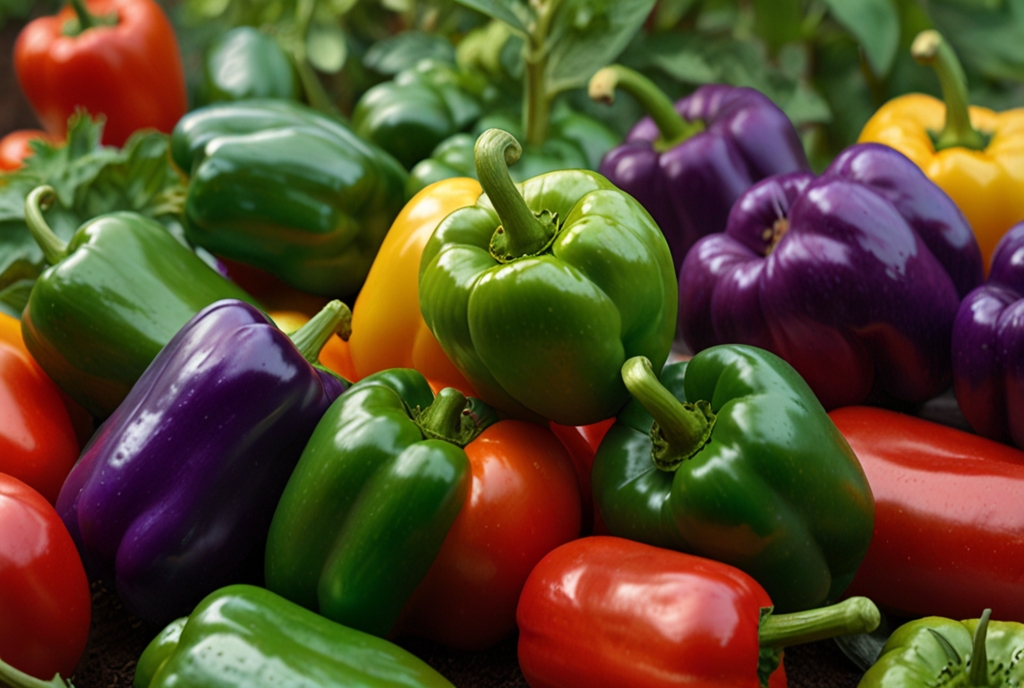
—
Save Seeds for Future Growing
If you enjoyed your pepper harvest, consider saving seeds for next season.
Saving seeds tips:
. Choose a fully ripe pepper.
. Remove seeds and dry thoroughly on a paper towel.
. Store in a cool, dry place in an envelope or glass jar.
. Label with the variety and date for easy reference.
—
Grow Bell Peppers in Containers or Indoors
No yard? No problem! You can grow bell peppers at home in containers.
Container growing checklist:
. Use pots at least 12 inches deep.
. Ensure good drainage and quality potting mix.
. Keep containers in a sunny spot or under grow lights.
. Fertilize more frequently—nutrients leach out faster in pots.
. Mini bell varieties are especially suited for indoor growing.
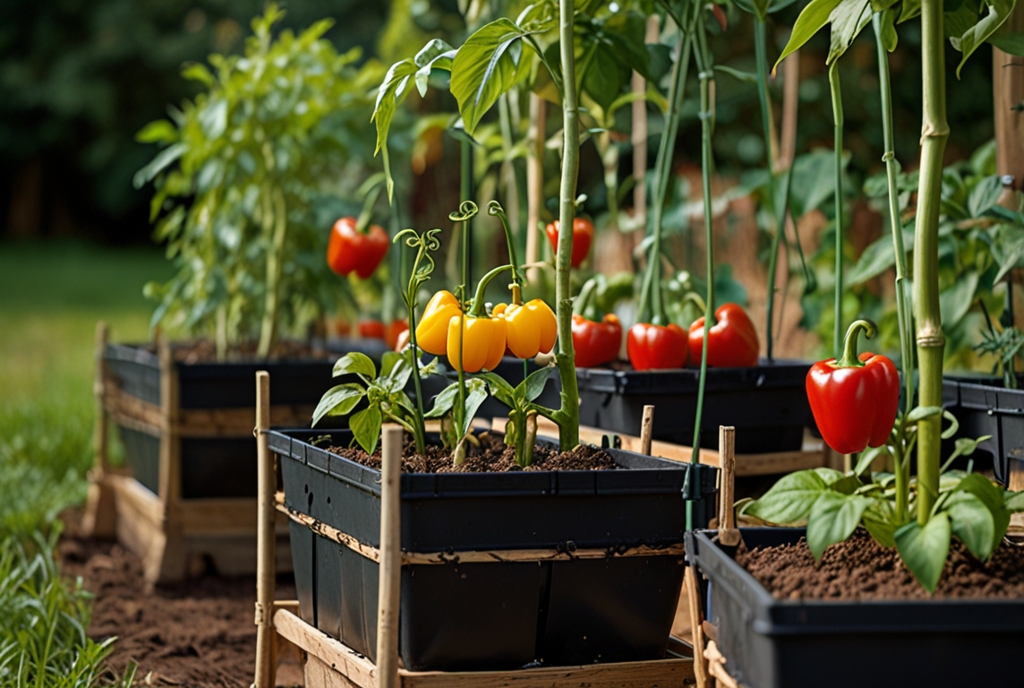
—
Troubleshooting Common Bell Pepper Problems
Sometimes things go wrong—here’s how to fix them.
Common issues and fixes:
Yellow leaves: Check watering; could be over- or under-watering.
Blossoms falling off: Usually heat stress—provide shade and water.
Small or misshapen fruit: Poor pollination or inconsistent watering.
Stay consistent and patient—bell peppers reward attentive care.
—
Reap the Benefits of Growing Your Bell Peppers
When you grow bell peppers at home, you enjoy:
Fresh, organic produce
Lower grocery bills
A fulfilling garden hobby
Control over pesticides and fertilizers
Vibrant colors and flavor in your meals
Even one plant can yield multiple peppers throughout the season!
—
Final Thoughts
Learning to grow bell peppers at home involves small efforts and big rewards. You’ll enjoy fresh, juicy bell peppers all season long with the right variety, a sunny spot, and a little care. Whether you plant in a garden bed or a balcony pot, there’s nothing like snipping your peppers to toss into dinner. So grab a packet of seeds and start growing today—you’ll thank yourself at the next harvest!
—
FAQs
1. Can I grow bell peppers indoors year-round?
Yes, with grow lights and proper heat, you can grow them indoors year-round.
2. How long does it take to grow bell peppers at home?
From seed to harvest, it typically takes 60–90 days.
3. Do bell pepper plants need full sun?
Absolutely! They need at least 6–8 hours of sunlight daily for healthy growth.
4. Can I grow bell peppers from store-bought seeds?
Yes, but choose fully ripe, organic peppers for best results.
—

